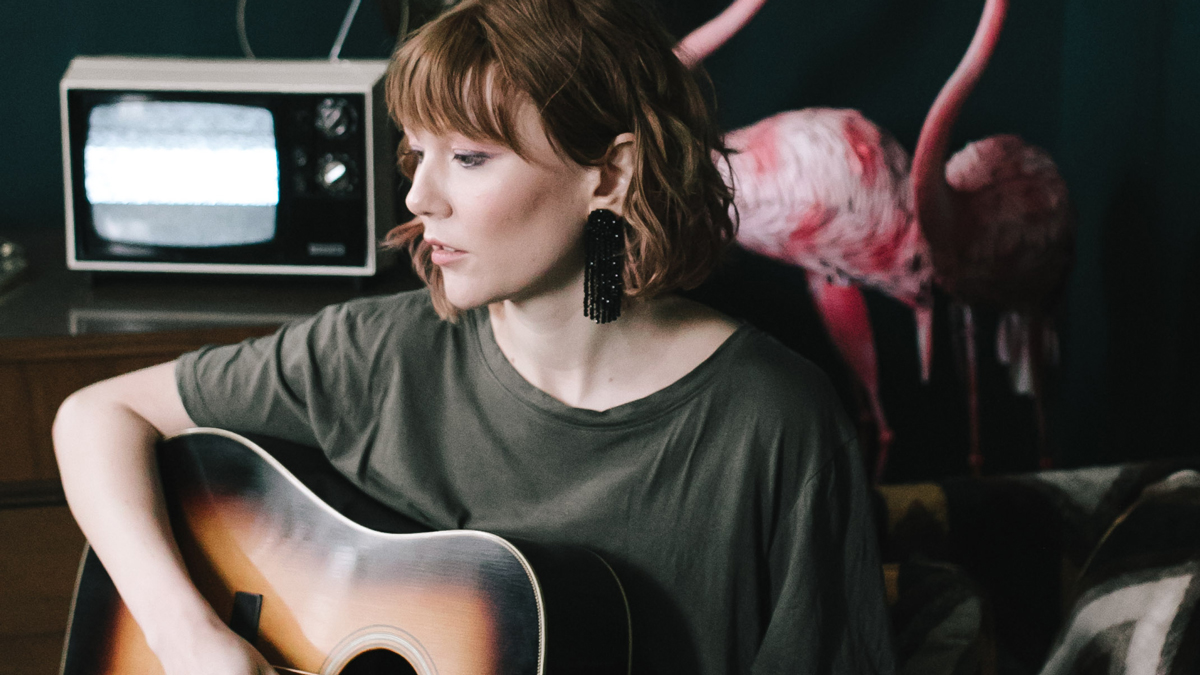Molly Tuttle teaches you how to play Good Enough
Often performed unaccompanied, Good Enough will teach you to embellish chords with single-note melodies

A key element of my guitar style is switching between playing chords and single notes. Most often, my guitar parts naturally encompass both approaches, as it is essential for me to lay down foundational rhythm parts to sing over, while also having the freedom to embellish those parts with single-note lines.
A perfect example of this approach can be found on my song Good Enough, which appears on my 2017 EP, Rise. I often play this song unaccompanied, and I’ll sing the lyric passages and then play lead parts and add fills during the performance.
I play the song with a capo at the 5th fret, and all of the written examples in this column are notated relative to the capo position: in other words, any unfretted string is notated with a “0” in the tablature; a note sounded one fret higher than the capo (at the 6th fret) is indicated with a “1,” etc.
When I am playing unaccompanied, or even in a group setting, I like to find ways to augment the melody with different chord tones
The first chord in the song is a standard “open-position” Em shape, though with the capo at the 5th fret, it sounds a concert-pitch Am chord. For our purposes, all chord names are also relative to the capo position, so this chord is notated as Em.
In the first part of the video, I do a play-through of an intro/verse/chorus/solo. I begin by playing a version of the verse melody, and when I am playing unaccompanied, or even in a group setting, I like to find ways to augment the melody with different chord tones, working around the standard open Em, C, G and D chord shapes.
Figure 1 shows the intro, and instead of simply replicating the verse melody, I’ll add dyads, or two-note figures, to fill out the sound, as in bar 2.
I like to use different articulation techniques and embellishments, such as sliding into a note or “walking” up to a chord, while remaining pretty true to the original melody.
All the latest guitar news, interviews, lessons, reviews, deals and more, direct to your inbox!
Bar 3 ends with a single-note phrase, which I insert to add interest to the rhythm part, and bar 4 ends with an ascending line that sets up the switch to G. Crosspicking also plays a very important role in the execution of this part.
As shown in Figure 2, I use crosspicking on each chord to drive the rhythm and the harmony along. When I get to the verse section, I still take the same approach to filling out the rhythm part, by walking up to chords and adding some crosspicking.
Figure 3 illustrates the verse section of the tune. Bar 1 and the first half of bar 2 consist of strumming, but I drop in a walk-up to C across beats 3 and 4 of bar 2.
Bars 3 and 4 are played on the C chord, with a combination of licks and crosspicking, followed by strumming on the G chord in bars 5 and 6 and then a switch back to crosspicking in bars 7 and 8 on the G-to-D chord change.
Be sure to work through all of these chord changes slowly and carefully, and strive for smooth and even execution, as you switch between the different pick-hand techniques.



